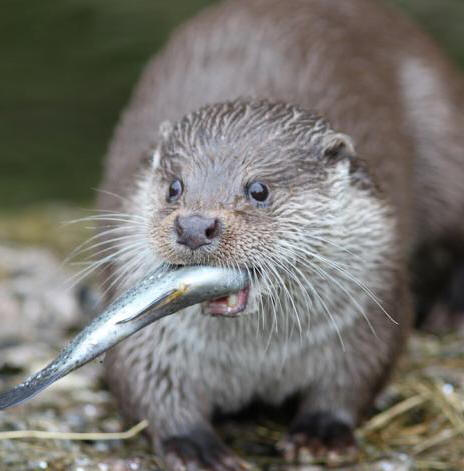Nutrition
As the Lontra provocax goes about its daily life there is always a need for food and nourishment throughout the day. Most otters, depending on their environment, are not shy and can be aggressive, taking whatever it can grab to eat using its’ teeth or hands. In most areas these otters have diets of fish such as : Cheridon australe, Cyprinus carpio, Galaxias, Notothenia, Oncorhynchus mykiss, Percichthys trucha, Percillia gillissi, Salmo trutta, along with crustaceans; Aegla, Camilonotus, Lithodes antartica, Munida, Paralomis granulosa, Parastacus pugnax, and Sammastacus spinifrom. These two families are their main source of food, but once in a while they eat mollusks and even some birds (Medina 2014)!
Soutern River otter enjoying a meal http://www.seadocsociety.org/species/animals/fishes/salmon/
References:
Sepulveda, M., Franco, M.,
Medina, G., Fasola, L. & Alvarez, R. 2008. Lontra
provocax. In: IUCN 2013. IUCN Red List of
Threatened Species. Version 2013.2. <www.iucnredlist.org>.
Downloaded on 27 March
2014.
Vogel, Gonzalo, and C. Gonzalez-Lagos. "Habitat Use and Diet of Endangered Southern River
Otter Lontra Provocax in a Predominantly Palustrine Wetland in
Chile." Wildlife
Biology 14.2 (2008):
211-20. Print.
